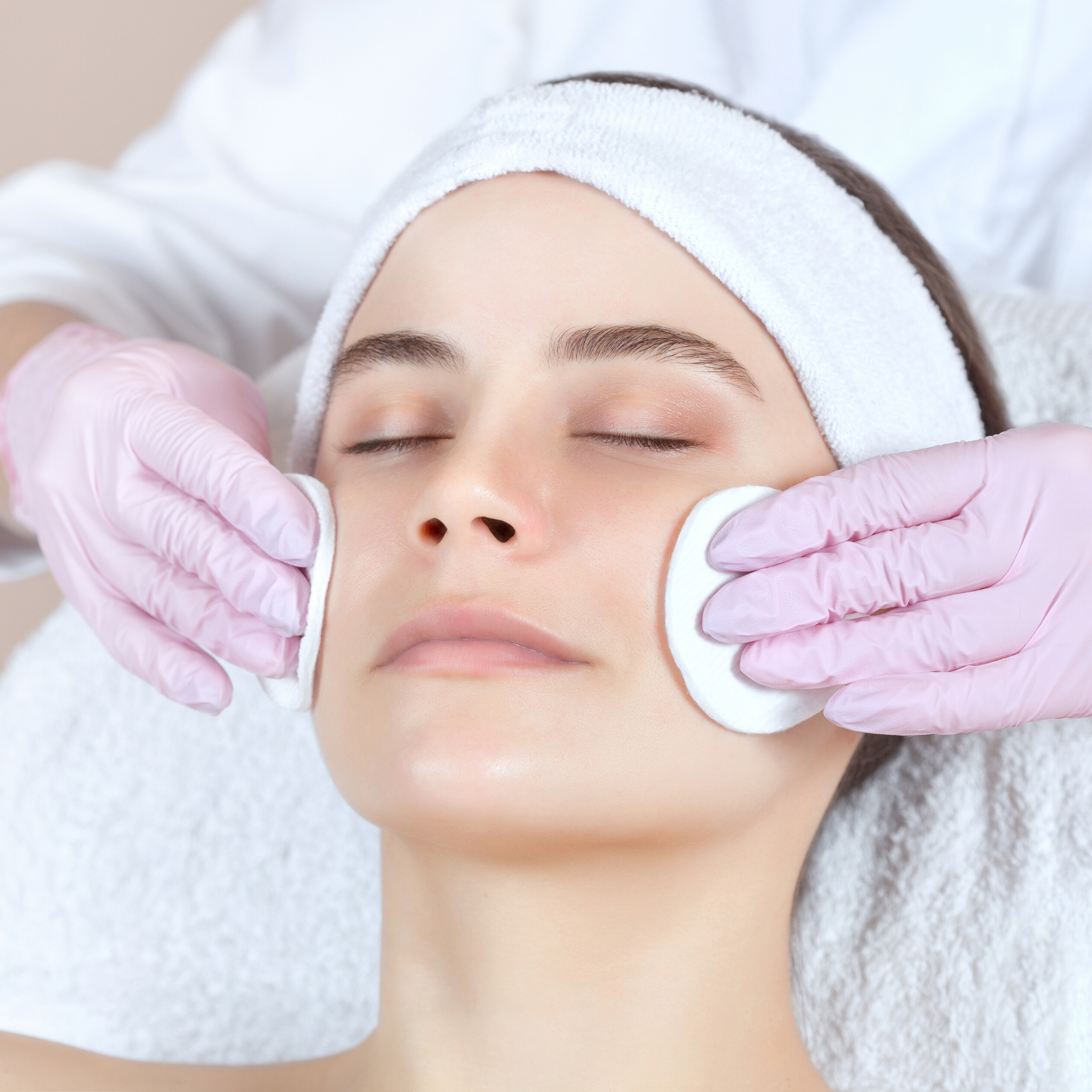Peptides remain a big deal in the world of anti-aging skin care due to their performance and their ability to be used by all skin types without causing irritation or sensitivity. They have developed a strong cult following along the way based on their results. Let’s start by helping you understand peptides and where they originate from.
Peptides are proteins
Peptides are tiny protein fragments—think of them as a series of amino acids that improve cell communication—but the correlation of how important the composition of a peptide is to the body and skin isn't always made. How exactly do protein fragments or amino acid chains improve the planning and health of the skin? So as to grasp this, the importance proteins have within the body and skin must be realized. Within the skin, collagen is formed of protein, which is comprised of amino acids. In fact, collagen makes up for 25–35% of the full body’s protein content,1 and this percentage is split between a minimum of 24 differing types of collagen that contribute to everything from structural concerns, like anchoring the skin together, to the looks of skin’s elasticity on the surface. Awareness of the decline of collagen as someone ages, and also the need to maintain healthy and ample collagen to attenuate the looks of fine lines and wrinkles is increasing. Many are unaware that other protein-based structures, including laminin and elastin, contribute to the skin’s strength and to an overall youthful appearance, but also decline with age, just like collagen. The role protein plays within the body is a vital one.
Aside from water, protein is that the most abundant molecule within the body. Proteins do quite strengthen the body; they're essential to each organism and are required for nearly every process within cells. Hormones depend on proteins to transmit messages throughout the body. Proteins affect a person’s thoughts and emotions by supporting both neurotransmitters within the brain and enzymes that catalyze chemical reactions. They balance fluids and electrolytes and assist within the regulation of the chemical equilibrium. They also function as transportation vehicles for nutrients. An understanding of the role of proteins within the body is a foundation for comprehending the function of peptides. The role proteins play within the body correlates with the actions of 4 categories of peptides, including signal peptides, enzyme inhibitor peptides, neurotransmitter inhibitor peptides (otherwise referred to as neuropeptides), and carrier peptides.
To Addressing Aging
Peptides exist already naturally within the body. Protein is ingested through the diet, not only from meat but also from a range of plant sources, allowing people to get essential amino acids. These amino acids combine in specific sequences that end in peptides that perform a spread of critical functions. one of those functions is the process of making collagen. A polypeptide undergoes a series of three processing reactions to eventually form a collagen molecule. Each collagen molecule is created from 1,050 amino acids and creates a triple helix, where three protein chains are twisted together in an exceedingly specific shape to create a sturdy, stable protein strand. These different strands of collagen then form a network with the body and skin, giving it its structure. By supplementing the skin from the surface with topically applied peptides, the outward reflection of supporting these natural processes is skin that appears and acts younger. Topical peptides made their debut as skin care ingredients with the copper peptide, a carrier peptide known for delivering the wound-healing benefits of copper deeper within the skin, and palmitoyl pentapeptide-3, a signal peptide that was first offered as a retinol alternative for its outstanding performance and applicable use for all skin types, even sensitive skin. This first-generation peptide was shown to reactivate the signal for collagen I and IV, which restored skin thickness.
While these first-generation topical peptides intrigued the skincare industry, second-and third-generation peptides are captivating the industry yet again with their ability to handle a broad range of aging concerns. One in each of these areas is that the dermal-epidermal junction (DEJ). The DEJ holds the skin together, improving its compactness, firmness, and elasticity. It maintains skin cohesion and anchors the epidermis to the dermis. Imagine the skin as plates held together by a series of chain links. If one in all these links becomes weak and breaks, the plates will slip. because the protein-composed links, like laminin and integrin, become weak within the DEJ, the skin begins to sag, and loses elasticity and resilience.
Signal peptides: Syn-Tacks from Pentapharm, based on palmitoyl dipeptide-5, is a dual peptide that reinforces multiple proteins within the skin, including laminin and integrin, while strengthening collagen IV, VII and XVII. By reinforcing and anchoring the skin together, this signaling peptide lays a foundation for firmer, thicker, more elastic skin. Signal peptides behave as dispatchers, signaling cells to carry out specific functions, such as collagen support, just like proteins are required by hormones to transmit messages throughout the body. These messages can either be for an increased action or decreased action, which overlaps with the enzyme-inhibitor peptide category. This category works to either inhibit protein-degrading enzymes, or initiate responses to repair damaged or weakened tissues. Proteins support neurotransmitters in the brain and peptides help support processes in the skin by inhibiting communication within neurons. Peptides strengthen and nourish the skin in the same way that protein nourishes and strengthens the body. They enhance the delivery of nutrients by acting as transportation vehicles, and sources of strength and support to the skin. Perfection Peptide P3 by Mibelle AG Biochemistry, or hexanoyl dipeptide-3 norleucine acetate, is another signal peptide that takes an age-defying approach closer to the role of enzymes or alpha hydroxy acids through exfoliation. As a person ages, cell turnover slows, leading to an increased appearance of wrinkles, accompanied by a rougher texture and reduced hydration. Desquamation requires the degradation of connections between the corneocytes that are formed by cell-adhesion proteins. Hexanoyl dipeptide-3 norleucine acetate competes for the bond that holds skin cells together, loosening skin cells and presenting a gentle method of exfoliation, helping skin become smoother, brighter and more evenly hydrated.
Enzyme-inhibitor peptides: Enzyme-inhibitor peptides help reduce the effects of enzymes, such as matrix metalloproteinases (MMPs). MMPs are enzymes involved in the degradation of proteins, including collagen. Reducing their actions can be just as important as strengthening collagen. Trylagen from Lipotec, based on tripeptide-10, citrulline and tripeptide-1, is a dual peptide combined with two hydrolyzed proteins that helps reduce enzymatic destruction caused by MMPs. Trylagen combats skin aging in three ways: by boosting collagen I, III and IV; by reducing the rate of collagen degradation; and by organizing this complex network.
Neuropeptides: The neuropeptide category has become very exciting over the years for its ability to reduce the appearance of expression lines. The primary mode of action for a neuropeptide is through the inhibition of acetylcholine. Acetylcholine is a transmitter released within the neuromuscular junction through a series of processes that eventually result in a muscle contraction. Acetyl hexapeptide-3 is a first-generation neuropeptide that blocks acetylcholine from its release. Syn-Ake from Pentapharm, or dipeptide diaminobutyroyl benzylamide diacetate, is a newer generation peptide that mimics the effects of waglerin 1, a 22-amino-acid-peptide string found within a temple viper’s venom. How this peptide differs from its predecessors is by its mode of action, as well as its swift performance. Syn-Ake doesn’t block acetylcholine from its release, but from its uptake by the receptors in the neuromuscular junction. Within the first two hours, the frequency of muscle contractions is reduced, which can lead to a visible reduction of wrinkles over time. The unique performance of both these neuropeptides in combination can lead to excellent anti-aging results.
Carrier peptides: Carrier peptides function to help stabilize and deliver important trace elements necessary for wound-healing and enzymatic processes. The most commonly encountered carrier peptide is used to stabilize and deliver copper into cells. Carrier peptides belong to a general category that acts as a facilitator of important substance transportation, but their major application is to deliver important trace elements, such as copper and manganese necessary for wound-healing and enzymatic processes. Recently, several peptides and proteins have been developed to accelerate and facilitate the delivery of bioactive molecules into the skin. These peptides and proteins are known as penetrating peptides, or membrane transduction peptides, and have basic transduction domains in their structure. A recent study demonstrated that short arginine-rich intracellular delivery peptides facilitate the transport of various proteins into living cells.
The skin’s building blocks
Peptides are an amazing rejuvenating ingredient based upon the composition of the body and how it functions. They are the skin’s building blocks, contributing to its health, strength and structure. The benefits of peptides are already recognized within anti-aging skin care, and continue to evolve and progress. Start out including peptides in your routine with our Peptide Quench Serum.
REFERENCES
- www. rcsb. org/ pdb/ static. do?p= general_ information/ news_ publications/ newsletters/ 2000q2/ molecules. html (Accessed Sep 13, 2012)
- Z Draelos, From Proteins to Peptides—What They Mean to the Dermatologist, European Dermatology Review 31–32 (2006)
- M Lupo and A Cole, Cosmeceutical Peptides Dermatologic Therapy 20 343–349 (2007)
- F Gorouchi and HI Malbach, Role of Topical Peptides in Preventing or Treating Aged Skin, International Journal of Cosmetic Science 31 327–345 (2009)



